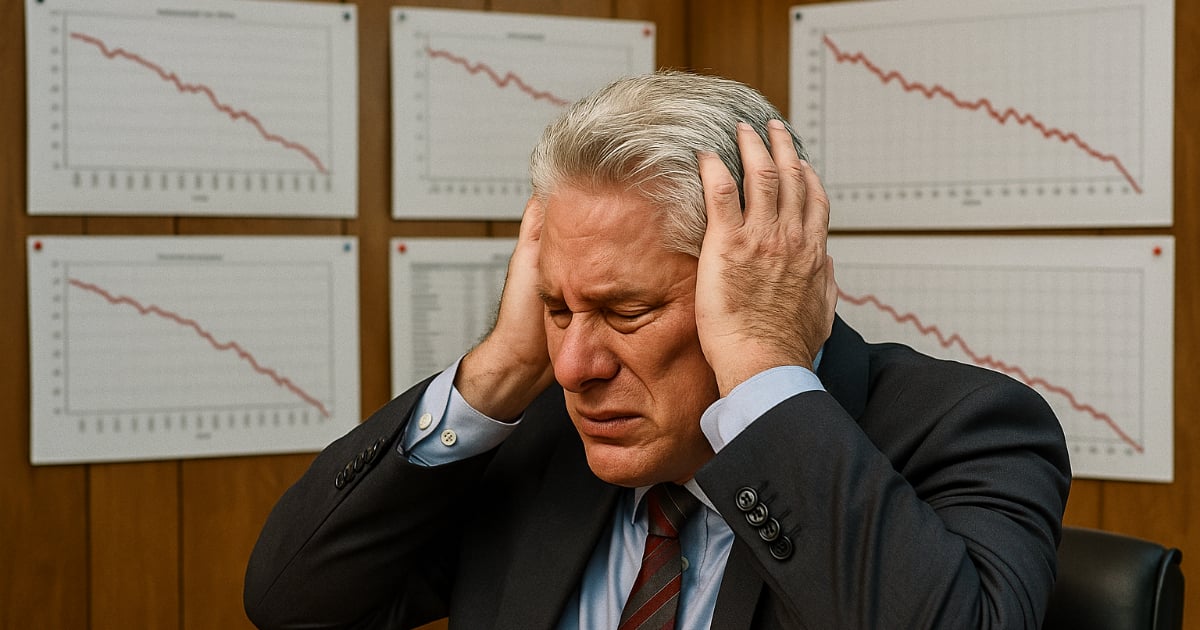The latest release of the report titled "Selected Indicators of the Business and Budgetary System" for April 2025 starkly reveals the structural decline of Cuba's economy under the leadership of Miguel Díaz-Canel. Contrary to the regime's triumphant rhetoric, official data indicates that the country is on the brink of economic collapse, with millions of Cubans struggling to survive on wages that barely cover basic necessities.
Produced by the National Office of Statistics and Information (ONEI), the report highlights that the average monthly salary in the state and budgeted sectors was 6,506.5 Cuban pesos (CUP), which translates to merely 17 dollars per month at the current informal exchange rate of 380 CUP per dollar. In a nation where a carton of 30 eggs costs 3,600 CUP on the black market, this income is insufficient to meet a family’s basic weekly food needs.
Even the supposedly more dynamic business sector fails to improve the situation. Its average salary was 7,120.3 CUP, while the budgeted sector, which includes health, education, and culture, averaged just 5,850.4 CUP. These figures underscore a profound inequality in income access based on economic activity. For instance, workers in electricity, gas, and water sectors earn over 12,000 CUP, whereas those in commerce, culture, or communal services earn between 4,400 and 5,100 CUP.
Moreover, the report exposes alarming territorial disparities: Havana boasts the highest average salary (7,442.2 CUP), while provinces like Santiago de Cuba (5,684.1 CUP) and Guantánamo (5,562 CUP) fall significantly below the national average. Despite these disparities, the regime continues to allocate the majority of investments to business sectors rather than bolstering essential services. Of the over 35 billion pesos invested in the year's first four months, more than 90% went to state enterprises, neglecting the budgeted sector that serves the population in health, education, and social security.
Meanwhile, enterprise profitability is declining: profits before taxes shrank by 13.8%, and the profitability per peso of net sales dropped from 0.19 to 0.17, highlighting an unproductive and heavily subsidized model. This occurs in a context where the number of state workers decreased by 5.8% over a year, and productivity grew by a mere 2.3%, reinforcing the perception that the state apparatus consumes more resources than it generates.
These statistics, far from being an external accusation, come from the state's own institutions, laying bare the severity of the economic deterioration the island is experiencing. The average salary, which authorities claimed would suffice after the so-called "Ordering Task," has become a symbolic number, barely covering the minimum required to survive in the informal market.
Miguel Díaz-Canel's policies have plunged the country into an unprecedented income crisis. The concentration of economic power in state hands, the disregard for genuine structural reforms, and the marginalization of the real private sector have created a barren environment, incapable of generating wealth, much less redistributing it.
The Cuban population faces this reality with growing indignation, expressed through social media, daily testimonies, and a historic migratory exodus in recent years. Meanwhile, the government persists in its rhetoric of resistance, ignoring the data revealed by its own institutions: that living on 6,000 pesos is impossible, the model is failing, and the country continues to impoverish.
The April report is not merely a technical document. It is evidence that the economic debacle is neither an external nor a circumstantial consequence but the direct result of failed decisions, an ineffective model, and a government that refuses to correct its course.
Understanding Cuba's Economic Crisis
What is the average monthly salary in Cuba's state sector?
The average monthly salary in the state and budgeted sectors is 6,506.5 Cuban pesos, which is approximately 17 dollars at the current informal exchange rate.
How does the economic situation affect Cuban families?
Cuban families struggle as wages are insufficient to cover basic necessities, such as food, with prices on the black market being extremely high compared to average incomes.
What disparities exist in Cuba's salary distribution?
Significant disparities exist, with higher salaries in sectors like electricity and water, while workers in commerce and culture earn much less. There are also regional differences, with Havana offering higher wages than other provinces.
How are investments distributed in Cuba's economy?
Over 90% of investments in the first quarter of the year were directed to state enterprises, neglecting essential services like health and education that benefit the general population.
